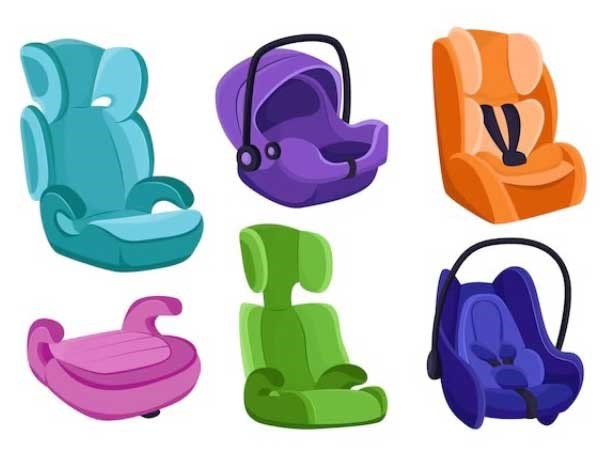As a parent or caregiver, one of your top priorities is ensuring your child's safety, especially when on the road. Car seats are a critical component of child safety in vehicles, significantly reducing the risk of injury or death in the event of an accident.
While you can fit your child's car seat yourself, it's strongly recommended you have an authorized installer do the job for you, at least for the first time. Here are some organizations that have Child Passenger Safety Technicians (CPSTs) who can help:
- SafeKids Worldwide (United States) – Free and sponsored installation events
- National CPS Certification Program – Find a certified tech in your area. This program has a directory of inspection stations maintained by the National Highway Traffic Safety Administration (NHTSA).
- National Highway Traffic Safety Administration (NHTSA) – For tips, videos and more information on car seat safety, selection, and installation.
Choosing the Right Seat for Your Child
Car seats are categorized based on the child’s age, weight, and height. Here's a breakdown of the different types:

- Infant Car Seats (Rear-Facing Only)
- Weight/Height Range: Typically for infants weighing up to 30-35 pounds and up to 32 inches in height. Children should remain rear-facing as long as possible.
- Key Features: Portable with a handle, designed to be used rear-facing only.
- Convertible Car Seats
- Weight/Height Range: Generally suitable for children from birth up to 40-50 pounds in the rear-facing position and up to 65 pounds in the forward-facing position.
- Key Features: Can be used rear-facing for infants and toddlers, then converted to forward-facing as the child grows.
- Forward-Facing Car Seats with Harness
- Weight/Height Range: Typically for children who have outgrown the rear-facing seat, from around 40-65 pounds and up to 49 inches in height.
- Key Features: Equipped with a five-point harness, designed to be used forward-facing.
- Booster Seats
- Weight/Height Range: Generally, for children weighing between 40-100 pounds and up to 57 inches in height.
- Key Features: Positions the vehicle’s seat belt correctly across the child’s chest and lap.
- When to Transition: Children should use a booster seat until they are tall enough (usually 4'9" or 57 inches) to fit the vehicle’s seat belt properly without it.
- All-in-One Car Seats
- Weight/Height Range: Varies by model, but typically covers from 5 pounds (rear-facing) to 100 pounds (booster seat).
- Key Features: Can be used as a rear-facing seat, forward-facing seat, and booster seat, making it a versatile option that grows with your child.
Why Car Seats Are Essential
Car accidents are a leading cause of injury and death among children in the United States. According to the NHTSA, properly using car seats can reduce the risk of fatal injury for infants by 71% and for toddlers by 54% in passenger cars.
Car seats are designed to protect children by:
- Distributing Crash Forces: Car seats are engineered to distribute the forces of a crash over a wider area of the child's body, reducing the risk of injury.
- Preventing Ejection: A properly installed car seat keeps the child securely in place, preventing ejection from the vehicle during a crash.
- Protecting the Head, Neck, and Spine: Car seats provide critical support to a child's head, neck, and spine, minimizing the risk of serious injury in a collision.
Additional Car Seat Safety Tips
- Choose the Right Car Seat
- Install the Car Seat Correctly
- Use the Car Seat Every Time
- Keep Your Child Rear-Facing for as Long as Possible
- Replace Car Seats After a Crash
- Avoid Using Second-Hand Car Seats
Remember, car seats are a legal requirement… and they are a critical tool for protecting your child's life every time you get behind the wheel.

